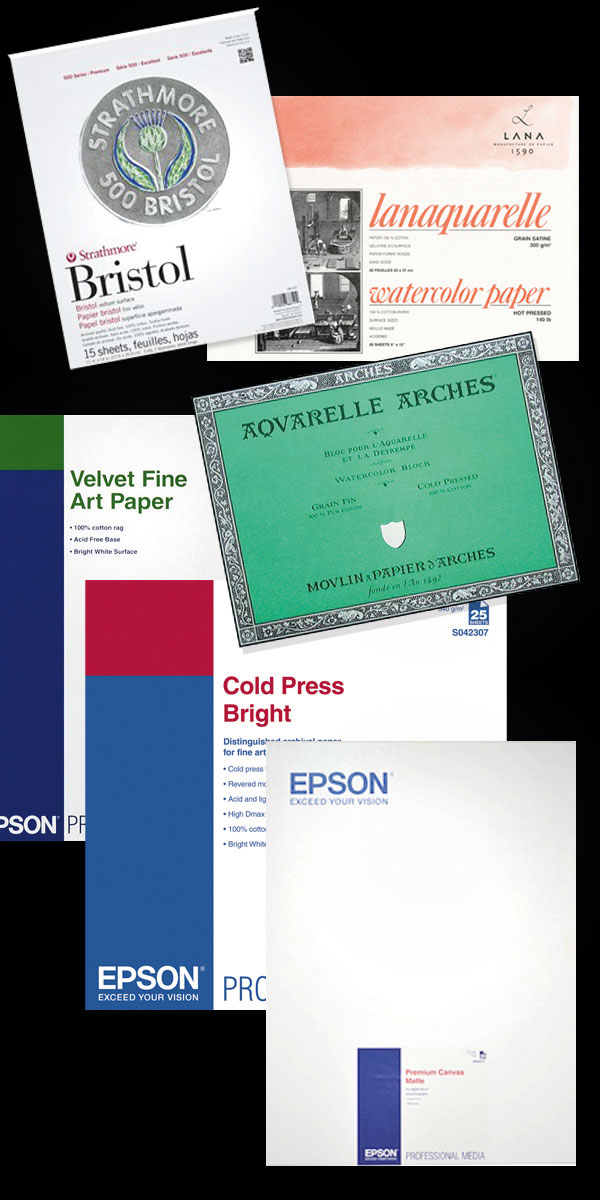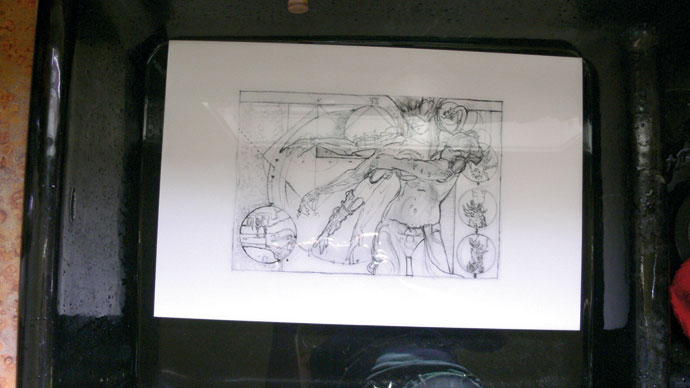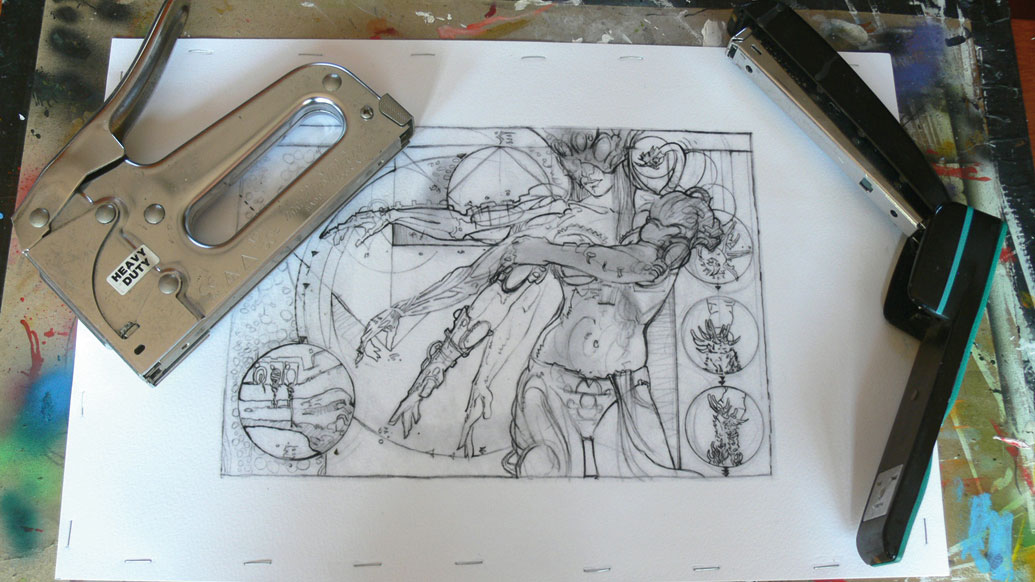How to prepare a sketch for painting
Illustrator Terese Nielsen explains a fast way to mount your final sketch to a paintable surface, with a little help from a scanner and a printer.
So your design portfolio is full of brilliant pencil drawings and now you now want to inject a bit of colour to your illustrations using paint. So how to start? Traditionally, a drawing would be created on tracing paper before being retraced onto the desired painting surface, using carbon/transfer paper. This could take between two and six hours, just to be ready to paint.
Nowadays, with a scanner and printer, you can print on almost any surface and be ready to paint in just a few minutes. I use Epson's 4880 Ultrachrome archival printer. These prints can be submerged in water and no bleeding occurs.
If you're limited to a regular inkjet printer, seal the print Crystal Clear before wet-stretching the print. When it is stretched and dry, it's ready for paint. If you're using oil, seal it with Clear Gesso or Matte Medium.
01. Select the appropriate paper

First of all, you should experiment with many papers to find out what you prefer. I use acrylic, oil and coloured pencils in one painting, so accordingly my surface needs to work well with each medium. I wet-stretch the printed sketch, because I begin each painting by layering in loose washes of acrylic. If the print is not wet-stretched, the surface will warp and buckle: not good.
02. Submerge the print in water

Hot water can degrade the paper. So instead use room-temperature water, along with a tray, sink or bathtub. The thicker the paper, the longer it needs to soak. For 121 lb paper give it five minutes, but up to 15 minutes for 300 lb of paper. Remove the print, let the excess water drip off the bottom, and place it on a flat piece of drywall/wood/masonite panel.
03. Staple the print to a board

Drywall works well. That's because it's cheap, easy to cut to any size and standard staples easily pierce through it. Wrap duct tape around the cut, powdery edges to avoid getting it on your clothes. For masonite or wood panels, you'll need a staple gun. Use it to staple one inch in from the outside of the print and every two inches around the perimeter. Then let it dry flat.
This article originally appeared in ImagineFX bookazine How to Paint & Draw.

Thank you for reading 5 articles this month* Join now for unlimited access
Enjoy your first month for just £1 / $1 / €1
*Read 5 free articles per month without a subscription

Join now for unlimited access
Try first month for just £1 / $1 / €1
Get the Creative Bloq Newsletter
Daily design news, reviews, how-tos and more, as picked by the editors.
